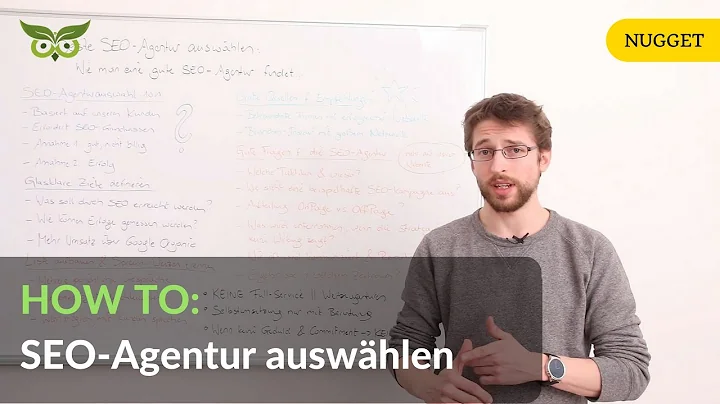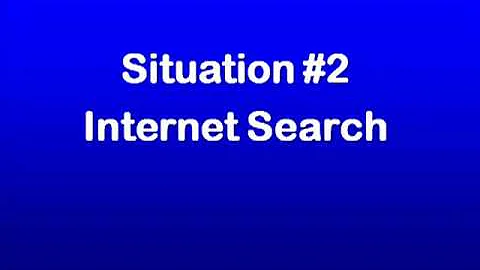Unraveling the Controversy: The Truth About SEO Cloaking
Table of Contents
- Introduction
- What is Cloaking?
- Why is Cloaking Considered High-Risk Behavior?
- The History of Cloaking
- Cloaking and Deceptive Practices
- Google's Quality Guidelines
- Rules of Thumb to Avoid High-Risk Cloaking
- Geolocation and Mobile User Agents
- Treating Googlebot like a Regular User
- Power User Techniques and Cloaking
- Conclusion
Introduction
In this article, we will delve into the world of cloaking, a controversial practice in the realm of search engine optimization (SEO). Cloaking involves displaying different content to users and search engine bots, leading to potential risks and violations of Google's quality guidelines. We will explore what cloaking truly is, discuss why it is considered high-risk behavior, and provide some useful rules of thumb to avoid falling into the trap of cloaking. Additionally, we will address geolocation and mobile user agents, as well as the potential gray areas for power users in the world of cloaking. By the end of this article, you will have a clearer understanding of cloaking and how to navigate the SEO landscape without resorting to deceptive practices.
🕵️♀️ What is Cloaking?
Cloaking is a practice in SEO where different content is shown to users compared to what is displayed to search engine bots. Imagine a scenario where a web server serves one webpage to ordinary users and a completely different webpage to Googlebot, which is responsible for crawling and indexing websites. In most cases, it is important for the same content to be shown to both users and search engine bots to maintain transparency and fairness. However, cloaking goes against this principle by treating these two entities differently.
❗️ Why is Cloaking Considered High-Risk Behavior?
Cloaking is viewed as high-risk behavior because it violates Google's quality guidelines. In the early days of search engines, cloaking was often associated with deceptive and misleading practices. For instance, a website might appear to be about innocent topics like cartoons, but when a user clicked on it, they would be redirected to explicit adult content. This resulted in a poor user experience and led to numerous complaints. Consequently, search engines like Google cracked down on cloaking and classified it as a violation of their guidelines.
📜 The History of Cloaking
Cloaking has been prevalent in the SEO industry for quite some time. In the early days of search engine optimization, some website owners found ways to manipulate search engine rankings by employing cloaking techniques. These techniques involved serving specific content to search engine bots in an attempt to boost their website's visibility on search engine result pages (SERPs). However, as search engines evolved and became more sophisticated, they developed mechanisms to detect and penalize websites that engaged in cloaking.
🚫 Cloaking and Deceptive Practices
The primary reason why search engines frown upon cloaking is the association with deceptive practices. Cloaking undermines the trustworthiness of search results and misleads users by presenting them with content that differs from what they expected to see. This not only diminishes the user experience but also tarnishes the reputation of search engines. To ensure fairness and transparency, search engines like Google have strict policies against any form of cloaking.
🔍 Google's Quality Guidelines
Google has detailed quality guidelines in place to ensure that websites provide a positive user experience and deliver relevant content. These guidelines aim to maintain the integrity of search results, promoting fair competition among websites. Cloaking falls under the category of "black hat" SEO techniques, which are explicitly discouraged by Google. Familiarizing oneself with these guidelines is crucial for webmasters and SEO professionals to avoid penalties and maintain a good standing with search engines.
📏 Rules of Thumb to Avoid High-Risk Cloaking
To stay on the safe side and avoid engaging in high-risk cloaking, there are several rules of thumb that webmasters and SEO practitioners should follow. The first rule is to treat Googlebot and users the same way, ensuring that the content served is identical for both. One way to achieve this is by taking a page, fetching it, and creating a hash of its content. By comparing the hash of the page served to Googlebot with the hash of the page delivered to users, discrepancies can be identified. If the two hashes differ significantly, it may indicate potential cloaking and a high-risk area.
It is important to note that not all differences in content are deemed as cloaking. Dynamic elements such as timestamps and changing ads will naturally result in variations between different versions of a webpage. However, intentionally treating Googlebot differently by specifically checking its user agent or IP address is a red flag and can lead to high-risk cloaking.
🌍 Geolocation and Mobile User Agents
One common concern among webmasters is how to handle geolocation and mobile user agents without falling into the realm of cloaking. Geolocation refers to the process of determining the location of a user based on their IP address. Treating users differently based on their location or preferred language is generally acceptable and even recommended. For example, serving content in French to users with French IP addresses or redirecting them to a country-specific domain (e.g., .fr for France) enhances the user experience.
Similarly, considering the capabilities of mobile user agents, such as smartphones, is permissible. Websites can customize their content to fit smaller screens and deliver an optimized mobile experience. However, it is crucial to ensure that Googlebot is treated like a regular user and not subjected to special treatment. Treating Googlebot like a desktop user and serving content in English is a safe practice, given that Googlebot typically crawls websites from the United States.
💪 Power User Techniques and Cloaking
Some advanced users might contemplate using techniques that involve distinguishing Googlebot based on its exact user agent string or IP address range. This approach often involves segmenting Googlebot and treating it differently from regular users. While this may seem like a sophisticated strategy, it is important to remember that cloaking is ultimately about treating users and search engines equally. If the aim is to find ways to manipulate or deceive search engines, this crosses the line into the realm of high-risk cloaking.
📝 Conclusion
Cloaking remains a controversial practice in the SEO industry due to its association with deceptive and misleading tactics. Google and other search engines prioritize fairness and transparency when it comes to serving search results. It is crucial for webmasters and SEO practitioners to adhere to Google's quality guidelines and avoid engaging in high-risk cloaking. By following the rules of thumb provided in this article and treating Googlebot like any other user, one can maintain a good standing with search engines and deliver a positive user experience.
Highlights
- Cloaking is the practice of showing different content to users and search engine bots.
- Cloaking violates Google's quality guidelines and is considered high-risk behavior.
- Early instances of cloaking involved misleading practices, leading to a poor user experience.
- Treating Googlebot differently from regular users is a violation of Google's guidelines.
- Geolocation and customization for mobile user agents are acceptable if Googlebot is not treated differently.
- Power user techniques that segment Googlebot based on specific criteria are considered high-risk cloaking.
FAQ
Q: Is there such a thing as white hat cloaking?
A: No, there is no such thing as white hat cloaking. Any form of cloaking, regardless of intentions, is against Google's quality guidelines.
Q: Can geolocation and serving different languages be considered cloaking?
A: Geolocation and serving different languages based on user location are generally acceptable practices and not considered cloaking, as long as Googlebot is treated like any other user.
Q: How can webmasters ensure they are not engaging in high-risk cloaking?
A: Webmasters should follow the rules of thumb provided in this article, treating Googlebot and users equally, avoiding specific checks for Googlebot's user agent or IP address, and focusing on delivering a consistent user experience.
Q: Are there any power user techniques that are not considered cloaking?
A: Power user techniques should be approached with caution, as the line between acceptable customization and high-risk cloaking can be thin. It is essential to ensure that Googlebot is not treated differently based on specific criteria.
Resources:







